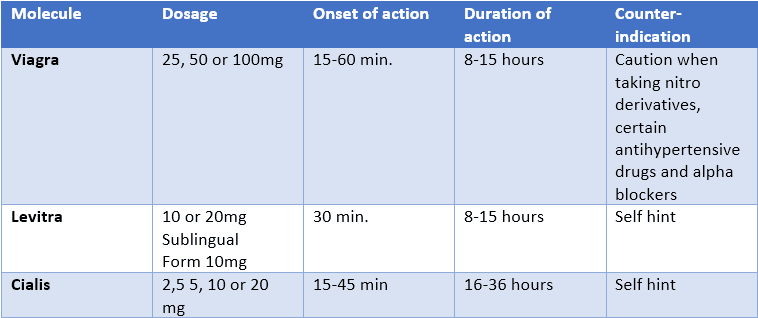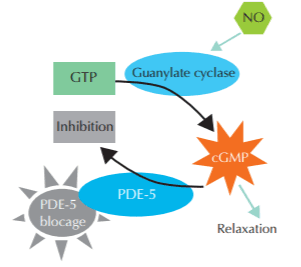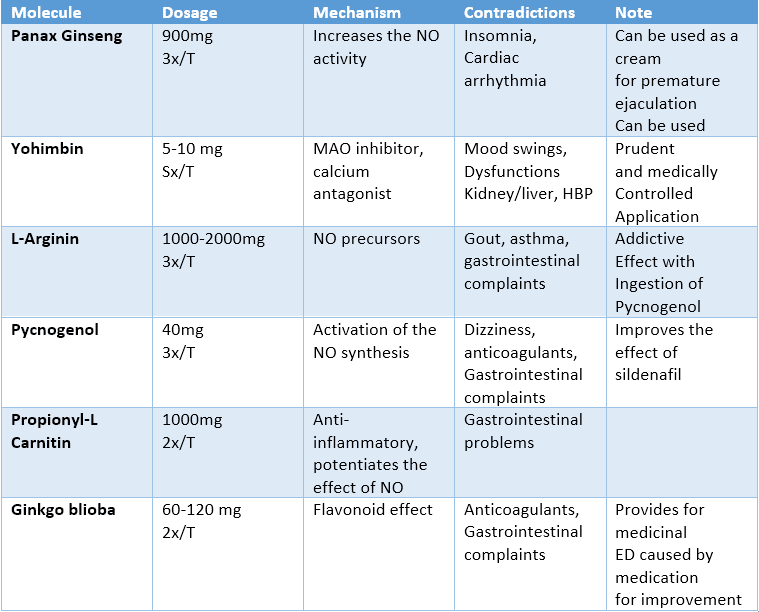Integrative medicine affects various issues in urology. It ranges from penile enlargement, prostate cancer, chronic prostatitis, diseases of the kidney, bladder, and more. It tries to incorporate different biological and physiological systems of the body. A healthy diet plays a vital part in the prevention of these diseases as well. Other factors would be getting a good night’s sleep and reducing stress when possible. There are also drug treatments, vacuum pumps, food supplements, and more. Researchers are working and investigating new treatments as well, mainly because of the targeted research in arginase inhibitors.
Want to learn more? Keep reading the article by Dr. Alain Bitton.
Hippocrates already said: “Let your food be your remedy”. For more than 20 years, integrative medicine has attempted to paint a more comprehensive picture, incorporating different biological and physiological systems of the human body into the treatment of dysfunction. This new approach, which has been denigrated by some as “simplistic”, is in fact simply an updated version of a more global approach to medicine, from before technology led to the fragmentation and isolation of the body’s organs and highly specialized their treatment. Today, it is once again a matter of involving the various organs of the sick person’s body in order to treat the cause of the problem in a metabolic and structured way.
Integrative medicine also has its place in urology.
Numerous areas are affected: benign prostate enlargement and prostate cancer, diseases of the kidney and bladder, chronic prostatitis and functional disorders of the pelvic girdle. We have decided to focus first on the areas that particularly affect sexual health. This article is about erectile dysfunction. The climacteric virile, the stage of a man’s life when his testosterone levels decline rapidly, also called andropause, will be covered in another article to be published in 2020.
Diagnostic approach
Since the introduction of phosphodiesterase 5 (PDE 5) inhibitors as first-line therapy, the medical profession is beginning to better understand the phenomenon of erectile dysfunction (ED), integrating it into a more global context of organic and, in particular, neurovascular dysfunction. This phenomenon, which is an important symptom of cardiovascular diseases, affects almost one third of all men in all age groups and almost one in two men over 50. From a physiological point of view, erectile function is guaranteed by good neurovascular functioning of the vascular smooth muscle cells of the endothelium of the penile corpus cavernosum, mediated by the important neurotransmitter nitric oxide (NO). Inflammations of the endothelium consequently lead to sometimes irreversible damage to the small arteries in the penis. So it seems that the medical work-up of erectile dysfunction is a good and important diagnostic “window of opportunity” for all cardiovascular diseases and especially for the quality of the vascular endothelium. In his diagnostic approach, the physician must therefore direct the history and the initial clinical and paraclinical examinations towards the search for organ diseases and especially cardiovascular diseases (cardiopathies, coronary heart disease and hypertension) and lipid metabolism disorders such as diabetes and metabolic syndrome should not be ignored. Patients over 50 with symptoms of testosterone deficiency must be investigated for hypogonadism (clinical examination and level of testosterone in the blood). It is estimated that the prevalence of hypogonadism in men is 5-15% and increases with age.
Integrative approach
Prevention plays a major role
The new data from integrative medicine, especially metabolic cardiology, demonstrate the essential role of prevention with regard to the known risk factors such as hypertension, coronary heart disease and metabolic diseases, namely hypercholesterolaemia and dyslipidemia. With regard to the harmful role of cholesterol, especially the “bad” LDL cholesterol, which is considered atherogenic, a differentiation must be made, as it is primarily cholesterol particles that trigger inflammation that are problematic, not cholesterol per se.
In any case, it is worth mentioning that erectile dysfunction whose cause lies in the endothelium of the vascular smooth muscle cells of the corpus cavernosum leads to a more global dysfunction at the level of the vascular endothelium throughout the body.
It is therefore necessary to act on the risk factors and promote a balanced diet to ensure a decrease in inflammatory processes. In particular, it is necessary to reduce insulin resistance by avoiding sugar and especially fructose, reducing weight and thus BMI (Body Mass Index) and body fat, and prescribing regular or even daily exercise (aerobic and anaerobic), with programmes adapted to the individual. In addition, strict control of blood pressure is required, with regular measurements by the doctor. Other important factors in achieving a healthy balance are controlling the hours of sleep, which should ideally be between 7 and 9 per night, and reducing stress factors. Some also mention exogenous factors that are particularly harmful to the endocrine system and disrupt the functioning of certain endocrine glands (thyroid, pituitary, pancreas). These include environmental toxins and pesticides, as well as female hormones (birth control pills) that enter water bodies and drinking water.
Drug treatments
Phosphodiesterase 5 inhibitors (PDE 5)
After establishing a programme of prevention and correction of any risk factors, drug treatments can be considered. These drugs, including primarily sildenafil, tadalafil and vardenafil, are the most effective and most commonly prescribed for the treatment of ED.
With the exception of structural differences, side effects and duration of action (Table 1), these molecules function according to the same scheme: they provide for the relaxation of the smooth muscle cells of the endothelium in the corpus cavernosum by inhibiting the degradation of phosphodiesterase 5 (Figure 1). This leads to a prolongation of the vascular relaxation and the filling time of the corpus cavernosum, which enables a qualitative erection.


Since the discovery of sildenafil in 1998 (in research on smooth muscle cell contractility in the heart) and similar molecules, PDE5 inhibitors have been prescribed to millions of people worldwide. The results in terms of functioning and quality of life are excellent. If the indications and especially the contraindications are respected, these treatments are safe, well tolerated and widely used.


Prostaglandin injections into the corpus cavernosum (Caverject, Edex)
Prostaglandin E1 or aprostadil is used for diagnostic injection or autoinjection by the patient into the corpus cavernosum if orally administered drugs do not have sufficient effect.
It is mainly used in cases of severe erectile dysfunction and sometimes also in diabetic patients or patients who have undergone radical surgery for prostate cancer. Thanks to a very easy-to-use plunger, the patient can prepare the syringe himself and adjust the dosage (5 to 20 micrograms) to his needs. The erection can last from 2 to 4 hours. Despite its efficiency, this principle is controversial due to its more invasive nature and the rather unromantic aspect compared to taking medication. The latter is discreet towards the partner without disturbing the love relationship. Sometimes an injection can lead to pain at the puncture point. The patient must be careful not to puncture a vein, and especially in the case of priapism (painful, persistent erection despite ejaculation), which is dangerous for the life expectancy of the organ, he or she must go to the emergency room.
Aprostadil can also be administered in the form of suppositories or transurethrally into the urethra. This form, which contains 1000 micrograms of prostaglandin, is easier to use but less efficient than injection into the corpus cavernosum, and is mainly used concomitantly with other therapies.
Vacuum pump (Erec-Aid)
For patients who are more open and particularly motivated, it is possible to use a vacuum pump. It makes it possible to obtain and maintain an erection thanks to the constriction band. The pumps are efficient in ED after pelvic surgery, radiotherapy or penile deviation, such as Peyronie’s disease. Most patients are very satisfied and the pump is a good compromise for those who cannot or do not want to take medication in the long term and are not ready for a penile prosthesis.
Food supplements
Patients who want to try a natural treatment before considering a chemical molecule will find plenty of scientific evidence in the literature for the efficacy of certain substances, their main properties are listed in Table 2. Of course, even though these remedies are “natural”, caution is advised. Divergent opinions can be found on the internet and the numerous websites recommending them without medical supervision are not always reliable. It should also be noted that these treatments are generally reserved for mild or moderate dysfunctions.
Dietary supplements can also help to improve or maintain endothelial function, as mentioned in metabolic cardiology. Recommended and most commonly used supplements include, for example, coenzyme Q10, selenium, L-carnitine, magnesium and vitamins C, D and E. The intake must always be accompanied by a competent doctor, even if natural substances are involved.


Alternative medicine
There is still a lack of experience regarding the effectiveness of certain alternative therapies in the treatment of ED, such as acupuncture or massage therapy. Some treatments in chiropractic and osteopathy have provided some improvement in pelvi-perineal dysfunction in the treatment of prostatitis, which is often associated with ED in young patients. Among the new non-invasive treatments, transcutaneous hyperthermia (i-wave/thermowave) should be mentioned, which, thanks to the external, gradual application of heat up to 44°C in the pelvic, bladder and prostate areas, redistributes vascularisation and improves blood flow in the pelvic and perineal areas is made possible. This also enables an improvement in the symptoms of prostatitis or pelvi-perineal dysfunction and an increase in sexual performance by regulating blood flow in the small arteries of the genital organs. The first clinical experiences on this subject are extremely promising.
Integration of body and spirit
Sexual desire, libido and orgasm are conditioned by complex psycho-neurological processes. It all starts in the brain centres of the hypothalamus, where desire is generated and integrated. In addition, the signals that trigger erection appear to be transmitted from the thoracolumbar sympathetic nervous system to the sacral parasympathetic reflexogenic erectile centre and finally to the distal effector in the external sex organs, namely the penis. It is essential to remember that while the anatomical and physiopathological cause of sexual dysfunction is usually real, the psychological aspect often takes over. The brain records the sexual failures and breakdowns, which can lead to self-doubt, anxiety, lack of confidence and sometimes even depression. This must be taken into account in the diagnosis and therapy of the patient and especially in couples therapy.
Influence on risk factors
As mentioned above, ED can be considered an early symptom of chronic diseases such as cardiovascular disease or dyslipidemia (it occurs on average 2 to 3 years before the disease). It is also worth mentioning that certain cardiovascular diseases such as hypertension, even if well controlled with medication, are the most common cause of drug-induced ED, as they lead to a decrease in arterial perfusion in the small penile arteries.
In addition to high blood pressure, the famous metabolic syndrome also plays a significant role in the onset and development of ED. In men with diabetes, the prevalence of ED is particularly high at almost 89%, while obesity, defined by a BMI of over 30, doubles the risk of developing ED. Regular use of alcohol and tobacco also significantly increases the risk of ED. For all these reasons, it is essential to correct cardiovascular risk factors and metabolic disorders. In addition, it is important to realise that the aforementioned chronic diseases rarely develop overnight. There is a kind of metabolic “continuum” during which the patient develops insulin resistance that increases before diabetes or metabolic syndrome manifest. This is also true for hypertension. A patient may develop inflammatory stiffness of the arteries even with what is considered normal blood pressure (13/8 cmHg), before hypertension develops insidiously and unnoticed. Erectile dysfunction is often the only premature symptom. Therefore, this is the place to start. Risk factors need to be corrected and lifestyle needs to be adjusted through dietary control, elimination of pro-inflammatory dietary and environmental factors and regular exercise. Proactive action at this stage prevents the patient from developing global endothelial dysfunction, which manifests itself through erectile and eventually sexual dysfunction.
In terms of diet, there is a special focus on the Mediterranean or Cretan diet or the famous Okinawa diet, which is particularly rich in polyunsaturated fatty acids of the omega 3 and omega 6 type, such as those found in olive oil. It is also characterised by the regular consumption of fresh fruit and vegetables and the reduction or even elimination of pasta and refined sugar, as well as stimulating substances such as coffee and tobacco.
New therapies
New treatments are currently being investigated, namely thanks to targeted research into arginase inhibitors. This enzyme selectively competes with NO for L-arginine. An increase in the expression and activity of arginase in the corpus cavernosum has been documented, which could explain ED. Selective inhibition of arginase would allow an increase in arterial blood flow in the penis.
Gene therapy is also a promising approach under development. Ongoing research focuses on arginase, especially thanks to markers such as Rho A /Rho kinase (ROCK) and p38-MAPK. In addition, the gene of the protein Maxi-K (MKPG), expressed as an ionic potassium channel, whose function is to initiate and maintain erection thanks to an ionic gradient on both sides of the smooth muscle cells of the corpus cavernosum, has been studied. All these discoveries are paving the way for a completely new gene therapy for the treatment of erectile dysfunction. When they become operational, these treatments can be used alone or in combination with phosphodiesterase-5 inhibitors. They would have the advantage that they could be prescribed without greater risk to patients being treated with nitroderivatives or other cardiac drugs. Gene therapy would also be non-invasive and the less romantic aspect of injections into the corpus cavernosum would be eliminated.
Conclusion
Even though extremely effective medications for the treatment of ED are available on the market, the prevention of risk factors for cardiovascular and metabolic diseases plays an essential role, as it helps to maintain a man’s metabolic health on the one hand and prevents the development of erectile dysfunction on the other. The latter is very distressing for the patient and can lead to frustration, relationship problems, loss of self-esteem and identity, and sometimes even separation. This is where integrative and functional medicine has its place and makes it possible to treat the patient’s problem globally by focusing the initial treatment on the prevention of the risk factors and on natural and alternative therapies before chemical molecules are used.










